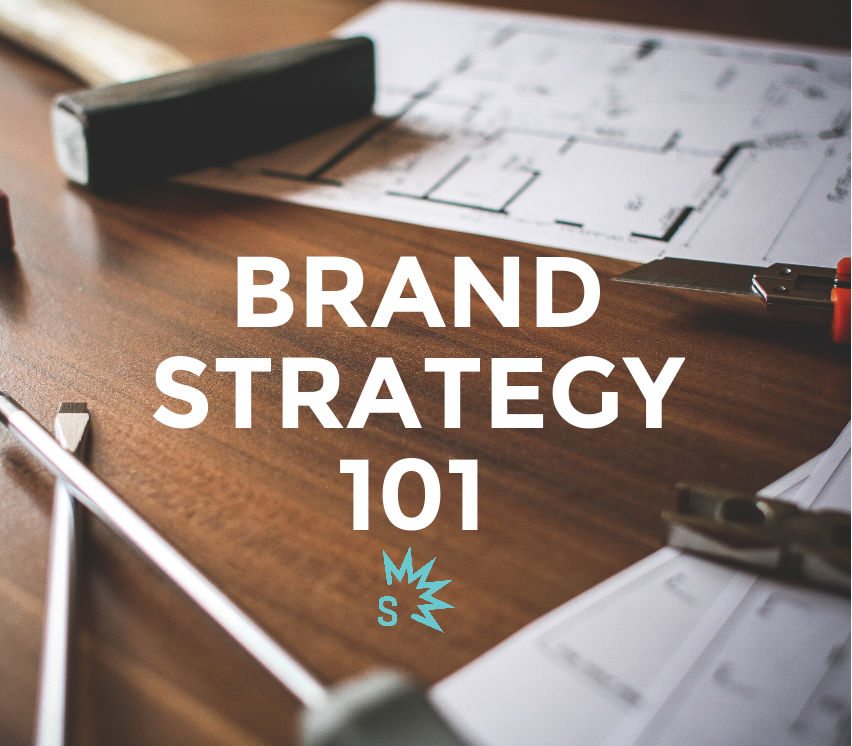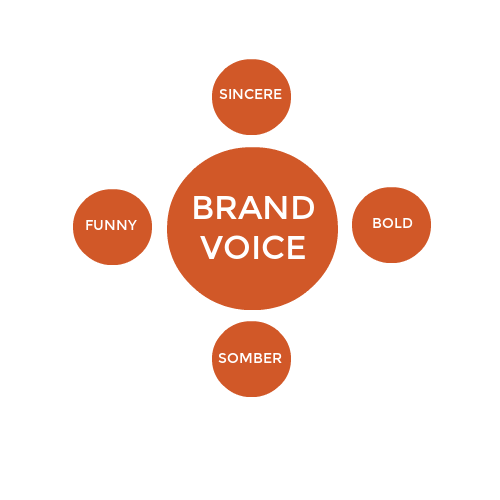
Your brand is one of the most important aspects of your company. Unfortunately, it can also be the most enigmatic. How do companies like Coca-Cola and Nike reach such high levels of brand recognition? Big budgets play an enormous role, but that doesn’t mean you can’t take a few ideas with a little brand strategy 101.
With the rise of digital marketing and e-commerce, branding has increased to the forefront of consumer trust and loyalty. Join us as we learn about the history of branding, the important elements of every branding strategy, creating a brand story, and, of course, digital brand techniques you can use to implement a long-term plan that will make your business recognizable and successful.
WHAT IS A BRAND?
When covering a topic like Brand Strategy 101, it’s helpful to start with the basics. It’s easy to copy and paste a definition.
Brand: (n) Any name, term, symbol or other element that a company is identified through.
But it’s always interesting to learn the history behind something that’s risen alongside civilization and still carries so much weight today.
HISTORY OF THE WORD “BRAND”
The word “brand” derives from the Old Norse word “brandr”, which means “burning”. This word represents the traditional act of a producer burning a handmade mark onto their piece of property or product.
But there’s much more to the brand story than a Viking burning the likeness of a horned helmet into the side of a longship. While brands have existed for centuries in the form of civilizations and religions, the idea of a “brand” was never truly given an identity itself.
But things have changed since the days of Viking burnings and ancient seals. With the rise of industrialization and modern production levels, factories and their mass production capabilities weren’t differentiating enough from local producers. The very first brands normally used the name within their company, like Hoover Vaccum or Campbell Soup.
Today, of course, presents a very different landscape for creating a recognizable and successful brand. The e-commerce industry and innovative technology have changed how we market our businesses, and the future looks even more intriguing.
WHAT IS A BRAND STRATEGY?
A brand strategy is a holistic approach to presenting your business to the world. The core is creating your brand identity, which sets you apart from your competitors.
A successful brand strategy process will:
- Create a brand message that resonates with customers
- Establish trust and loyalty
- Drive brand recognition
Now that the idea of creating a brand has drastically changed from its origins, you might wonder how you can make that work in your favor. Research shows that you only have seven seconds to make a favorable first impression on potential customers or clients, which is why developing a brand strategy that tells a relatable story is so important.
WHAT ARE THE ELEMENTS OF A BRAND STRATEGY?
The elements of the modern brand are abundant. Some elements of the modern-day brand include:
- The name
- Logo
- Tagline
- Motto
- Personality
- Voice
- Mission
With a bit of help, you can use a few of the lesser-known aspects to create a brand strategy process that sets your business apart.
Brand Personality
Your brand personality is represented through the relatable communication you offer the consumer.
It may be weird to think of your brand as having a “personality,” but it’s an essential aspect of a business’s success. Your brand equity depends upon a consistent set of personality traits that consumers can see in themselves or others.

BRAND VOICE AND TONE
Your brand voice is an overall statement of how and why you speak to your customers, whereas tone is a subset of brand voice.
When providing any form of collateral that communicates with the consumer, you’re speaking (or at least should be) in your “brand voice.” A meaningful and consistent brand voice is vital for crafting brand recognition, interaction, and loyalty.
Tone describes how and in what capacity your company relates to consumers.
If you’re writing an email, do you go with a happy-go-lucky tone or a somber tone? Example below:
“Hey, Kanye!”
or, do you write… “Dear, Mr. West,”
If you’re writing a page for your website, do you go with a quirky tone or a professional tone? Example below:
“We’re a fully-loaded creative agency that will make your cellphone apps more powerful than the Hammer of Thor.”
Or, do you write… “We’re a full-service marketing agency that boosts mobile ROI for each company that we work with.”
How to Find Brand Voice
So, how do you find your brand voice? Well, it’s fairly easy, let’s start with the major components:
Who are you talking to?
– Existing clients
– Prospective clients
– Company partners
– Internal employees
– General public
How are you talking to them?
– Through your website
– On your blog
– In an advertisement
– On social media
– Email
– Newsletter
– Ebook
– Etc.
Answer these questions and draw up scenarios for any foreseeable form of communication you may have with your audiences in the future. Deciding on some adjectives to define your brand voice will give you a firm foundation to start spreading your message. But remember, the most important thing about brand voice is that you remain consistent.
MISSION STATEMENT
Mission statements may seem bland, but a company needs to have a mission. However, the mission statement itself isn’t nearly as important as the actual carrying out of that mission.
So why not have some fun and de-corporatize it? Instead of calling it a mission statement, take a page from Snap’s book and call it your “brand story.” Because what is a mission statement if it isn’t about where we come from and where we’re going?
We want to tell our mission like the great story that it is:
Snap exists to build strategic digital marketing plans that let clients achieve long term business goals. Born from a grassroots ecommerce success story, Snap has been on a mission to create the most effective websites on the Internet for more than a decade.
HOW TO DEVELOP A BRAND STRATEGY
To get your brand strategy rolling, you must use marketing tactics to communicate your message to consumers. Digital branding and branding, in general, require a long-term strategy, so unless you’re incredibly savvy, don’t expect to see huge results right away.
Develop a long-term plan for your branding strategy process by keeping these essential factors in mind!
- Know Your Target Audience. Figure out what your target audience wants or needs and what they relate to the most. Use that knowledge to help guide your brand’s image and message.
- Consider Your Brand Positioning. How does your brand offer value to your customers or clients? How can you present that information in your brand’s image, motto, tagline, etc?
- Focus on SEO. Optimizing your site to rank high in search engine results pages will increase the credibility of your site in the eyes of your audience, which helps establish your brand as trustworthy and authoritative.
- Create a Brand Book. Ensure all your employees are on the same page about how you want your brand to be represented. Create a brand book that covers everything about your brand, including logo variations, color schemes, mission statements, voice statements, branded terms, banned word lists, writing style, and audiences.
- Network With Online Communities. Whether you need to market a niche company or something more expansive, there are people on the internet talking about it. If you can find them and you have unique and relevant content, they may pay attention to you. Spreading your influence means expanding your brand and finding new customers and opportunities.
- Community-Driven Branding. One of the latest trends in developing a brand strategy process that will aid your long-term plan involves focusing less on broadcasting your message and more on building lasting and meaningful customer relationships. Tell them about your brand story, and engage actively in conversations and discussions. Get involved on social media, take their feedback into account, and show that your company values its customers more than it values itself.
- Identify Opportunities for Brand Activism. It’s 2023! That means customers value companies that imbue diversity, inclusivity, and sustainability. Customers appreciate and trust companies that are transparent about what they do and how they do it.
Here’s a great brand book article that lets you see some of the biggest companies’ books, like Nike and Apple, so you can get some inspiration for your own business.

Testing Your Brand Strategy
After all is said and done, and your branding strategy has been given some time to make an impact, how will you know the extent (or failure) of your plan?
There are a couple of ways.
First, you can conduct A/B tests. This is possibly the easiest way to test online content. All A/B testing does is compare two variations of the same page against one another to see which is the top performer.
Let’s say you want to test a certain brand tone on a call-to-action. Create two pages, split traffic to both, and see which CTA receives more clicks. That’s the page to implement full-time.
Another measuring strategy you can use is analyzing the click-through rate. CTR measures the percentage of clicks advertisers receive out of total ad impressions. Impressions are the number of times your ad is viewed.
For example, if a banner ad is delivered 100 times (100 impressions) and receives one click, then the click-through rate for the advertisement would be 1%.
To calculate your CTR, use the following equation:
CTR = Clicks / Impressions x 100
Branding Strategy 101 Recap
Hopefully, now you have a clearer picture of brand strategy, why it’s one of the most important aspects of customer retention, and what you need to focus on for the future of branding.
Above all, remain consistent in every message you deliver. Cultivate and strengthen your brand using these strategies, and you’ll be well on your way to ripping open your brand for the entire world to see.
